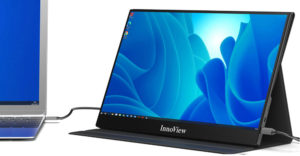
Most segments of the technology market are hurting due to the recession, but one — open source systems — appears to be thriving despite the economic turmoil.
Open source vendors such as Red Hat, SugarCRM and Vyatta say the recession has compelled organizations and corporations large and small to take a closer look at Linux-based software and hardware in an effort to reduce costs.
As the global economic crisis worsens, it is likely that adoption of open source systems will increase.
That said, whether open source systems are truly cheaper over a long period of time compared to proprietary systems such as Microsoft’s Windows is still an open question. Ten years after Linux first went mainstream in the enterprise, there is still debate over how to measure the total cost of ownership of open source versus proprietary systems.
Recession Driving Adoption
“The economic crisis is going to be a catalyst for open source, much like the technology crash of 2001 catapulted Linux front and center,” said Laurie Wurster, a Gartner analyst. “There’s been a big uptick in Linux adoption since that 2001-2002 time frame.”
Ask a few companies that make open source applications, and you’ll hear the same thing.
Last year alone, SugarCRM, maker of an open source sales force automation tool, added about 1,000 new customers. The Cupertino, Calif.-based company has grown from three employees in 2004 to more than 160 today and has raised US$46 million in venture capital from marquee Silicon Valley venture firms such as Draper Fisher Jurvetson and New Enterprise Associates.
“Sugar continues to do well,” said Martin Schneider, director of product marketing at SugarCRM. “We continue to beat all of our goals and revenue guidelines we set for ourselves.”
Over in Belmont, Calif., Vyatta, a small open source startup that makes networking applications, saw sales surge 600 percent in 2008, though the company acknowledged that revenue went from a very small number to a much larger number, hence the outsized growth percentage.
“We grew our customer count by more than 150 percent,” said Dave Roberts, vice president of strategy and marketing at Vyatta. “Some of that was the organic startup growth, but we saw in Q4 that there were a lot of customers that came to us because of the economic woes.”
Vyatta customers had money to spend on IT infrastructure, but not a lot, Roberts told LinuxInsider.
“They knew 2009 was going to be tight, and we’ve seen that trend continue,” he said.
Raleigh, N.C.-based Red Hat, which makes Linux-based desktop, server and virtualization software, is seeing the same pattern when it talks to potential customers.
“IT departments are all being faced with substantial budget reductions,” said Scott Crenshaw, vice president of Red Hat’s business platform unit.
“By moving to open source, they can save projects that would otherwise die,” he told LinuxInsider. “We met with someone in the government who was about to cancel a major project, and they turned to open source. We were able to save that project for them.”
Open Source Means Lower Cost – Or Does It?
All three companies tell potential customers that their open source systems are much cheaper over the long term than proprietary systems.
“It’s lower cost over time and lower cost to customize and integrate,” SugarCRM’s Schneider told LinuxInsider.
Still, is it really cheaper?
One thing is clear — organizations that buy open source systems believe that is the case.
“I’ve been running surveys the past four years, asking companies why they went with an open source solution,” Gartner’s Wurster told LinuxInsider. “[All] have adopted open source because there is a perception of a lower total cost of ownership [and] lower cost of technical support services — and the open code and standards gives them vendor independence and flexibility.”
Yeah, but is it really cheaper?
“There’s some debate over that,” Wurster said. “I believe there is. I would say, up front, there is a significant cost savings. However, because open source is a new tool, it might increase the amount of necessary training and technical support.”
Gone Mainstream
Whatever conclusion one reaches concerning the total cost of ownership of open source systems versus proprietary systems, one thing is clear: Open source has gone mainstream in the years following the dot-com bust of 2000 and 2001.
SugarCRM counts a number of high-profile companies as its customers, including cable company Bright House Networks, global accounting firm BDO Seidman, H&R Block and Men’s Wearhouse.
Vyatta’s customers include Honeywell, United Technologies, the state of New Mexico court system and the University of Florida.
“In 1999, heads of companies would have said Linux is interesting but that they didn’t understand it,” Vyatta’s Roberts said. “They didn’t think they could trust business-critical systems to open source.”
That is changing — but slowly, with companies still taking a cautious approach.
“I don’t see that [organizations are] going to just rip and replace, especially mission-critical systems,” Wurster said. “I think they’re going to migrate as they can where they can.”
As they do, their costs will increase, again calling into question the belief that open source is cheaper.
“As you deploy open source in more mission-critical situations, your costs will increase because you want to make sure those systems never take the company down,” Wurster said. “Those costs will be similar to proprietary systems.”















































Granted, it costs something to migrate but that is a one-time cost and not a lot.
The on-going costs for GNU/Linux are much less. What is the cost of a patch/re-re-reboot? What is the cost of needing one-third as many servers to provide your services? What is the cost of one person being able to manage hundreds or thousands of boxes from his desk?
A lot of mission-critical applications run on servers. M$ did not even have the facility to run a mission-critical app on a server without a GUI until 2008. One can rest a lot easier knowing there are many fewer points of failure in a GUI-less system. GNU/Linux has been able to that for us for many years.
When you get to malware, any question of running mission-critical stuff on GNU/Linux becomes a joke. When the stuff is coming hot and heavy, GNU/Linux is a safer fox-hole by far. If a vulnerability is found in GNU/Linux it can usually be fixed in minutes without shutting down.
When you get to performance, there is no doubt that GNU/Linux gives great value. I have never had any user say they preferred that other OS for performance. I have done many side-by-side tests of GNU/Linux and that other OS. There is no way I would want that other OS to run any mission-critical system. The priorities of its creators are to lock people in and keep the cash coming, not to provide good service at a reasonable price. In these times, it is no wonder people are turning to free software. I ask, "What kept them?". The reasons for migrating are just as compelling in good times as bad. I think it is that perceptions change in bad times. The bubble of comfort with the status quo has disappeared.